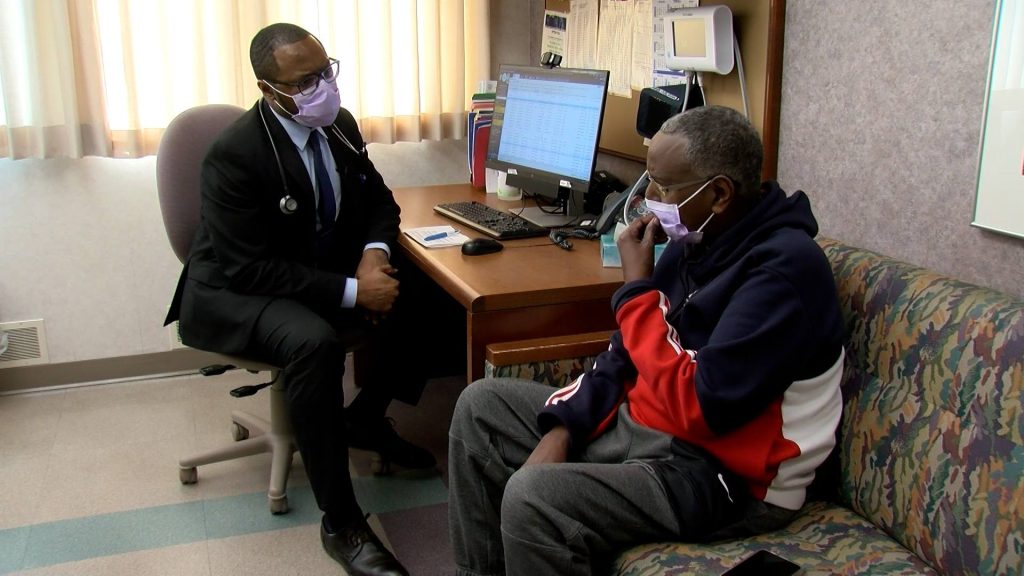-
Artificial intelligence creates opportunities to close health care, workplace equity gaps

Advances in artificial intelligence (AI) and platform models are increasingly driving everyone's day-to-day experiences, including how people receive health care. However, those experiences are not always the same for everyone. April is Minority Health Awareness Month, a national observance to raise awareness about health disparities that continue to affect people from racial and ethnic minority groups. At Mayo Clinic, experts are looking at the ways AI and digital tools can and are shaping the future of health equity, organizational collaborations, and equity, inclusion and diversity in the workplace.
"This is a tremendously exciting time," says Dr. Anjali Bhagra, medical director of Mayo Clinic's Office of Equity, Inclusion and Diversity. "Mayo Clinic is leading the charge – health care is evolving and Mayo Clinic is leaning into this technology and how it can transform how we deliver care to patients and the workplace where we deliver it. This will help us save lives."
Access to health care has historically been inequitable due to factors such as health disparities, racism, mistrust, lack of access and proximity to health care resources, and more. Advances in technology are finding ways to fill the gaps.
Artificial intelligence relies on algorithms. Log on to any website and ads will share recommendations on what you should buy. Log on to an entertainment streaming app and suggestions pop up about what to watch. Algorithms customize experiences using data based on people's frequent, previous input.
Using tools such as AI allows Mayo Clinic to synthesize large amounts of data to address the individualized needs of patients, better.
The future of health care is equitable, more accessible
Mayo Clinic is leading these efforts with its Center for Digital Health and Mayo Clinic Platform and IT. Through these digital resources, Mayo Clinic is finding new ways to take care of patients whose needs are changing.
"Patient needs are changing," says Dr. Bhagra. "They want quick, easy access electronically. Many appreciate the ease that AI provides, though in health care there are still hesitations."
The issue of health equity is very complex due to various kinds of discriminatory practices and disadvantages that affect marginalized populations.
"There are cultural, ethical and sociological issues that contribute to all of these things that we notice," says Dr. Bhagra. "The solutions cannot be oversimplified. I think it would be extremely unrealistic for any of us to say that we can solve all these challenges with digital tools alone."
But the opportunities are promising. Many of the data elements gathered in the process of care and social determinants of health are not always populated and not always completely reflective of the patient.
"They aren't very granular," says Dr. John Halamka, president of Mayo Clinic Platform. "The HOUSES index (a cloud-based software tool that allows researchers to measure individual-level socioeconomic status data based on an address and publicly available housing assessment data) is a way of inferring social determinants of health from the place you live. If we know exactly where the nearest grocery store is, what the air, water and land pollution quality near a patient is, and what the crime or educational issues are, we can use this as a correction factor. And the analysis of the AI algorithms we create will help us understand if they're going to perform without bias."
For example, in electronic health records, AI can potentially flag if social determinants of health are in a "red" zone identified for socioeconomic risks and make appropriate adjustments. Where people are born, grow up, work and live accounts for up to half of the health outcomes. In the absence of bias, AI can address those health inequities.
"There's still a lot of problems to solve," says Dr. Bhavik Patel, a Mayo Clinic radiologist. "We're talking about access to care equity, understanding somebody's socioeconomic status, understanding somebody's individual culture and beliefs, and integrating all of this into making sure that if we recommend a treatment or therapy, it sits well with that patient and, therefore, they are going to have a higher chance of following up."
Collaboration is pivotal to AI advancement
Collaboration is a key factor in the development of AI algorithms that are better able to eliminate bias, not only within Mayo Clinic, but in health care systems nationwide, even globally.
"One challenge we have today is that knowledge in this country is not evenly distributed," says Dr. Halamka. "Urban versus rural, academic versus community — the hope is that as we capture knowledge and democratize access to the specialty care delivered at Mayo Clinic sites, we spread it to the world while keeping an eye on fairness and equity and monitoring the output. I think as long as we're understanding where these algorithms work and don't, they have great potential to democratize access to specialty care."
"We're trying to democratize AI by putting these tools in the hands of anyone," says Dr. Patel. "If the tools are developed appropriately, there's no reason not to believe that the care that we provide at Mayo Clinic could then be extended anywhere providing access to patients that are not lucky enough to go down the road to a brick-and-mortar health care facility like Mayo Clinic within our geographically disparate sites. We've shown that you can host some of these AI models directly on an iPhone which can now be used as a point of care. And that can be in areas that are underserved within our country, as well as abroad."
AI support for equity in the workplace
But the value of AI technology extends beyond the day-to-day care for patients. It is also a tool that can be used as part of recruitment and retention – by supporting a sense of belonging among staff.
"Our strategic priorities, when it comes to Mayo Clinic EID goals, is to enhance belonging, increase representation, dismantle racism and, finally, hardwire infrastructure," says Dr. Bhagra.
Among the workforce, AI can help with:
- De-biasing the language used when it comes to recruitment, such as when developing job descriptions and ads for open positions.
- Using AI-enhanced tools to mitigate potential biases while reviewing candidate applications.
- Recognizing and addressing roadblocks for diversity within the application pool.
"In partnership with the Center for Digital Health, we are trying to look at a belonging tool at Mayo Clinic," says Dr. Bhagra. "We talk a lot about generative AI because we are excited about ChatGPT, but there are other ways AI can be used. There are causative, descriptive, predictive and prescriptive applications of AI that can help us develop a belonging tool that will align with our values and generate a values score."
Additionally, AI is a tool that has great potential in education.
"We're trying to streamline the use of AI for our medical school education," says Dr. Patel. "If you're a trainee in residency or fellowship, various programs have now integrated AI."
While AI provides the intel that will best serve the treatment of patients, it also can be used to personalize tools for employees best suited to their abilities.
Bold. Forward.
AI-driven health technology is a key component to Mayo Clinic's Bold. Forward. strategic initiative to improve health care through insights derived from data. AI is one of the tools that can help cure more patients, connect people and data, create new scalable knowledge, and transform health care. While the use of AI to address equity in health care is promising, it is not perfect. Some risks, including unavoidable human bias and ethical concerns, require continued research and exploration.
"We want to mitigate risk in a responsible way," says Dr. Patel. "We always need to backstop everything with a human. But we shouldn't let that prevent us from becoming early adopters to really make some changes."







